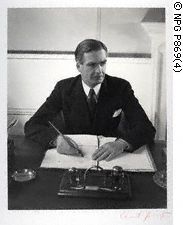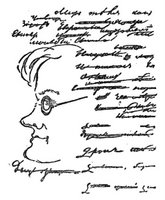APPEARANCES & REALITY IN THE DEBATE ABOUT AMERICAN 'DECLINE'
"Something puzzling just happened in Washington: a liberal American president who opposed the invasion of Iraq endorsed one of its chief neoconservative advocates. By embracing Robert Kagan’s essay, “The Myth of America’s Decline”, Barack Obama has done the author a turn. The essay is excerpted from Mr Kagan’s book, The World that America Made, which comes out later this month....
Mr Kagan, who also wrote Americans are from Mars, Europeans are from Venus, the provocative post-Iraq book, has written a clear and powerfully-argued essay. But Mr Obama might want to scan it more closely. Start with its economic facts. Mr Kagan says that in 1969 the US had “roughly a quarter” of the world’s income. “Today it still produces roughly a quarter,” Kagan wrote. “America’s share of the world’s GDP has held remarkably steady.”
That would seem pretty conclusive. Here are more precise measures. In 1969, the US accounted for 36 per cent of global income at market prices, according to the International Monetary Fund’s World Economic Outlook. America’s share had fallen to 31 per cent by 2000. Then it started to plummet. By 2010, the US accounted for just 23.1 per cent of world income. In one decade America lost 7 per cent of world share. More than half that loss occurred before the Great Recession.
China’s economy, meanwhile, was barely an eighth the size of the US’s in 2000. Today it is 41 per cent – and that is based on current exchange rates. Were Beijing to float the renminbi, China’s economy could be valued considerably higher. Far from being “remarkably steady”, the shift over the past decade has been uniquely rapid by any historic measure. Another decade like that and America’s pre-eminence will look very shaky. Indeed, as Arvind Subramanian writes, China would surpass the US within 12 years even if its growth slowed to 7 per cent a year and the US hit an unlikely annual pace of 3 per cent.
But the book’s real subject is American exceptionalism. Mr Kagan believes that it is largely up to Americans to decide whether their country’s dominance will continue. In a clear echo of the author’s criticisms of Bill Clinton in the 1990s, Mr Kagan fears the US is losing its will for muscular world leadership. “In the end, the decision is in the hands of Americans,” he writes. “Decline, as Charles Krauthammer [a commentator] has observed, is a choice.”
And here we arrive at the book’s main puzzle. Mr Kagan denies America is in relative decline – and mistakenly insists there is no economic evidence for it. Yet he argues that America’s decline is being actively willed by unnamed “politicians and policymakers”. They are “in danger of committing pre-emptive superpower suicide out of a misplaced fear of declining power....”
Mr Kagan believes America’s future will hinge largely on taking a very different turn to the one in which US foreign policy and the Pentagon is apparently headed. The continuation of the international liberal order depends on the presence of a strong and active US, he argues".
Edward Luce, "The Reality of American Decline. " The Financial Times. 6 February 2012, in www.ft.com
"Edward Luce’s critique of my book The World America Made rests almost entirely on a disputed figure for US share of global gross domestic product (“The reality of American decline”, Comment, February 6). My argument that the US share has remained at roughly a quarter of world GDP since 1969 rests on the US government’s figures, which can be found at www.ers.usda.gov/Data/Macroeconomics
Mr Luce cites as his source the International Monetary Fund’s World Economic Outlook. However, even according to that database (which can be found at www.econstats.com/weo/V012.htm), the US share of global GDP, measured in purchasing power parity, was a little over 24 per cent in 1980 (the database does not go back farther), a little over 23 per cent in 2000, and a little over 21 per cent prior to the recession that began in 2008. This is not a world-altering shift in economic weight.
But even if Mr Luce’s numbers were the only measure out there, it is simplistic to judge the distribution of power in the international system entirely on the basis of the size of a nation’s economy. China’s economy was also the largest in the world in 1800. Mr Luce does not address such complicating matters as the fact that China’s per capita GDP is a small fraction of that of the US.
There is a far more sophisticated argument for China’s growing economic power, presented by Arvind Subramanian in his book Eclipse, which I acknowledge and address in my book".
Robert Kagan, Letter to the Financial Times: "US Share is still about a quarter of Global GDP." The Financial Times. 6 February 2012, in www.ft.com..
The on again and off again, now inspired by Mr. Kagan's newest book, on once again,debate about American decline still rages as per the exchange in the Financial Times between its chief American correspondent, Mr. Edward Luce and Mr. Kagan himself. Aside from the conflict over how to measure precisely national GDP (pricing parity or via exchange rates), there is a larger and more important variable which to an extent is obscured by the current debate. In point of fact, per se measurements of World GDP, have never been a good measurement of whether Great Power x, y or z, was rising or declining. Something which reductionist accounts like Professor Paul Kennedy's late 1980's opus on the subject obscured rather than illuminated 1. With his many epigonii of course indulging in much worse exercises in this vein. In one of the more cogent critiques of Kennedy's opus which appeared at the time, a critique which indeed can be said to apply to most of his epigoni as well, the American economic historian and former policy-maker, W.W. Rostow noted that:
"Kennedy's generalizations from the historical record down to 1942 suffer from a confusion of two quite different links between economic resources and power in the world arena: the progressive economic strains imposed by the pursuit of hegemonic dreams in the face of affronted nationalism; and the progressive dilution of relative economic power as the British demonstration of industrial and commercial takeoff, starting in the 1780's, was followed during the succeeding two centuries by a sequence of takeoffs in continental Europe, North America, Latin America, Asia and the Middle East. This distinction becomes central when Kennedy moves beyond 1942. Kennedy theory takes the form of a double analogy: he treats the post-1945 rise in the U.S. power by analogy with hegemonic empires of the past; its decline by analogy with his interpretation of the decline of Britain. Neither analogy in my view is applicable....my most fundamental disagreement with Kennedy is his tendency to regards history as linear. He clearly believes, for example, that societies cannot regenerate. He regards calls for regeneration as the province of right-wing patriotic politicians trying fruitlessly to swim against the tides of history 2."
While I for one cannot for the life of me, indulge in, much less agree with the late Professor Rostow little exercise in urrah patriotismus at the end, the point that he makes in this regard is in fact accurate if one does indeed look a bit at the historical record for say the twentieth century. Viz, as per Stephen Broadberry's & Mark Harrison's exhaustive study on the economics of the Great War clearly show, circa 1914, Tsarist Russia, who one does not ordinarily identify as being the premier European Great Power, had a larger GDP than either Great Britain or Imperial Germany and indeed almost twice as large as that of France, and two-half times the size of the Dual Monarchy 3. And yet notwithstanding this fact, it was Tsarist Russia which was first to be knocked out of the conflict. Along a similar vein, one can point out, that while Imperial Germany had a GDP which was larger than that of Britain and twice as large as that of France, its total expenditure on the war was only two-thirds that of Great Britain and not much larger then that of France 4. With perhaps the piece de resistance , in such a category of the dangers of economic determinism and reductionism, is the fact that the American army in France, went to war, one year after declaring war on Germany, using predominately French and British heavy weapons: artillery, tanks and airplanes. So much for the idea of America as the coming hegemon circa 1918 5. All of the above is not to gainsay the fact that economically, and even to a small extent geopolitically, the Americans and indeed the West as a whole are not as strong or a good position as they were circa anno domini 2000. Merely that per se, the overall size of a nation's economy does not necessarily determine automatically its machtpolitik position vis-`a-vis other countries. Or as importantly its ability to command resources in the inevitable competition that is the 'politics among nations' (to use Hans Morgenthau's phrase). Inasmuch as Professor Kagan's thesis is that 'American / Western decline', is more myth than reality and that insofar as it is reality it is a reality that can be changed provided that the overall society is willing and able to adjust itself accordingly, than indeed Professor Kagan is in the right. Whether or not, both American and indeed Western political culture can make the adjustment to reassert itself in a hegemonic fashion has yet to be seen. One need not be a Spenglerian pessimist to note that nothing seems as far away from the contemporary societies of the West than the heroic self-sacrifices made by the generation that entered into combat in the summer of 1914.
1. Paul Kennedy, The Rise and Fall of the Great Powers (1987).
2. Walt Whitman Rostow, "Book Review Essay: Beware of Historian bearing False analogies." Foreign Affairs. (Spring 1988), pp. 864-865. For Kennedy's response to this critique, see: Paul Kennedy, "Comment and Correspondence: Pointers from the Past." Foreign Affairs. (Summer 1988), pp. 1108-1111.
3. Stephen Broadberry & Mark Harrison, Edited. The Economics of World War I. pp. 7-10, et passim.
4. David Stevenson, With Our Backs to the Wall: Victory and defeat in 1918. (2011), pp. 420, et passim.
5. Ibid., pp. 350-380 et passim.











0 Comments:
Post a Comment
<< Home